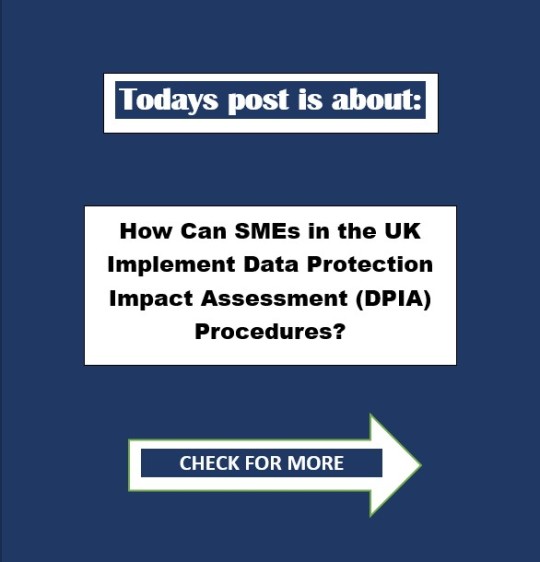#smes
Text
Funding SMEs
Fuel Your Small Business Success!
We believe in the power of small businesses to make a difference. We're here to support you every step of the way.
Together, we can overcome challenges, achieve success, and make a lasting impact.
Get Funding Today - https://www.samratfinancialbanking.com/funding
#financial planning#investing#financial freedom#samrat investments#smes#smallbuisnessowner#small artist#small business#funding#fundraising#money
10 notes
·
View notes
Text

For more business insights and advice on leading, innovating, and executing like a top-tier global CEO, please visit us online at www.the365ceo.com.
#The365CEO#CorporateTraining#ExecutiveEducation#Collaboration#YourStrategicAdvantage#BusinessInsights#BusinessAdvice#BusinessSchool#ExecutiveToolKits#Management#Leadership#CSuite#CEOs#CEOMindset#SmallBusiness#SMEs#ProfessionalDevelopment#Entrepreneur#BusinessStrategy#Sales#Marketing#BusinessGrowth#Revenue#Success
4 notes
·
View notes
Text

Simplifying Dubai Branch Setup with PRO Desk: Making Your Journey Easy
Embarking on the journey to establish a branch office in Dubai demands meticulous navigation through a series of steps, each crucial for ensuring compliance and operational readiness. At PRO Desk, our mission is to transcend the expectations of SMEs, corporate giants, and entrepreneurs alike by offering expert consultation tailored to facilitate Stress Free Branch Setup in the vibrant landscape of Dubai. With a focus on commercial activities permissible within the United Arab Emirates, we empower entities to harness the diverse opportunities for profitable engagement.
Step 1: Secure a Local Agent
Engage a Local Service Agent (LSA) for administrative functions, ensuring compliance with UAE regulations.
Step 2: Obtain Initial Approvals
Reserve the trade name and acquire essential initial approvals from the Department of Economic Development (DED).
Step 3: Ministry of Economy Application
Submit detailed documentation to the Ministry of Economy, outlining the foreign company's activities and management structure.
Step 4: Acquire DED License
Receive formal licensing approval from the Department of Economic Development (DED), fulfilling industry-specific requirements.
Step 5: Complete Administrative Tasks
Fulfil administrative obligations such as leasing workspace, opening bank accounts, and obtaining necessary visas.
Step 6: Dubai Chamber of Commerce Membership
Finalize registration as a member of the Dubai Chamber of Commerce, submitting required documents and passport details.
Notarization of Documents
Ensure verification and authentication of documents through UAE consulates and foreign ministries, with translations into Arabic for presentation.
Fees for setting up a branch in Dubai vary depending on business needs and the commercial license required, dictated by the activities of the foreign company within the UAE jurisdiction. While Ministry of Economy (MOE) fees remain consistent, overall costs differ among businesses.
At PRO Desk, we alleviate the complexities associated with branch setup in Dubai, offering comprehensive guidance and support every step of the way. Entrust your venture to our seasoned professionals, and embark on a journey of success in the dynamic business landscape of the UAE.
#PRODesk#DubaiBusiness#BranchSetup#EntrepreneurshipUAE#BusinessExpansion#Consultation#SuccessJourney#SMEs#CorporateServices#uaebusiness#businessindubai#dubaifreezone#businesssetup
2 notes
·
View notes
Text
Strategic Policy Needed for Pakistan’s SMEs
In Pakistan’s intricate economic landscape, small and medium-sized enterprises (SMEs) form the fabric that sustains the entire infrastructure. Their significance cannot be overstated. SMEs represent around 90 percent of businesses globally; there are around 5.2 million in Pakistan. They contribute 40 percent to the GDP, account for 30 percent of exports, and employ over 80 percent of the…
View On WordPress
#economy#Pakistan#pakistan economy#Pakistan semiconductors#Pakistan SMEs#semiconductor industry#Small and Medium Enterprises#smes#south asia#Taiwan semiconductor industry
0 notes
Text
IndiaStartupExpo
💥Exciting news! Our Managing Director, Mr. Kabilan Sokkalingam, is set to share valuable insights on the transformative impact of ERP software in the tea chain business. Catch his session tomorrow (April 27th) during the India First Startup Expo & Conclave 2024, to be held at Pondicherry University.
🤫Don't miss this fruit-bearing opportunity for young entrepreneurs to explore the future of the business through innovative technology!✨

#StartupBusiness#IndiaFirstStartupExpo#Expo#WorkShops#BusinessTechIdeas#India#Technology#DigitalTransformation#Innovation#BusinessGrowth#BusinessStrategy#SMEs#EntrepreneurGoals#StartupIdeas#BusinessMentor
0 notes
Text
MATRADE Partners with Amazon to Boost Malaysian SMEs Globally
MATRADE, the Malaysia External Trade Development Corporation, and Amazon Global Selling have announced a year-long collaboration aimed at enhancing cross-border e-commerce capabilities for Malaysian small and medium-sized enterprises (SMEs).
The partnership responds to the increasing demand from Malaysian businesses to expand their reach globally. Throughout 2024, both organizations will conduct…

View On WordPress
0 notes
Photo

We know that many #smes cannot spend what they would like to on their #marketing in 2024.🟠 So we've come up with an affordable marketing automation option. ☑️ ✔️Email marketing ✔️Booking automation ✔️Custom funnel plan ✔️Traffic planning ✔️Content calendar and much more.... 😍 All that from £150/month.... You couldn't get a better deal, not even if you outsourced offshore. Link below in bio..... Get chatting!
0 notes
Text
youtube
#BusinessSuccess#DigitalStrategy#OnlinePresence#StartupLife#TechInnovation#EconomicDevelopment#MarketingTips#SMEs#DigitalEconomy#EntrepreneurialSpirit#BrandBuilding#SocialMedia#OnlineMarketing#SEOStrategy#GrantFunding#DigitalFuture#youtube#small youtuber#online business#entrepreneur#ecommerce#branding#marketing#accounting#bookkeeping#digitalmarketing#Youtube
0 notes
Text
Services – Micro, Small, and Medium Business Owners and Start-up Entrepreneurs
Services related to micro, small, and medium business owners and startup entrepreneurs encompass a diverse range of offerings tailored to their specific needs. These may include business consulting, financial advisory, legal assistance, marketing strategies, technological solutions, and networking opportunities, all aimed at fostering growth and success in their ventures.
#BusinessConsultancy#SMEs#Startups#Entrepreneurship#SmallBusinessAdvice#BusinessDevelopment#StartupConsulting#SmallBizTips#ConsultingServices#BusinessSupport
0 notes
Text
How Can SMEs in the UK Implement Data Protection Impact Assessment (DPIA) Procedures?
Small and medium-sized enterprises (SMEs) in the UK face unique challenges when it comes to navigating data protection regulations. However, implementing Data Protection Impact Assessment (DPIA) procedures can be a transformative step for these businesses. In this post, we’ll delve into the significant benefits DPIA procedures offer to SMEs, the specific problems they can solve, and how they can…

View On WordPress
#BusinessStrategy#ComplianceMadeEasy#CustomerTrust#Cybersecurity#DataGovernance#DataManagement#dataprivacy#dataprotection#DataProtectionImpactAssessment#datasecurity#DigitalTransformation#dpia#gdpr#LegalCompliance#privacycompliance#RegulatoryCompliance#RiskManagement#SMEs#TrustBuilding#UKBusiness#smallbusiness
0 notes
Text

For more business insights and advice on leading, innovating, and executing like a top-tier global CEO, please visit us online at www.the365ceo.com.
#The365CEO#CorporateTraining#ExecutiveEducation#Collaboration#YourStrategicAdvantage#BusinessInsights#BusinessAdvice#BusinessSchool#ExecutiveToolKits#Management#Leadership#CSuite#CEOs#CEOMindset#SmallBusiness#SMEs#ProfessionalDevelopment#Entrepreneur#BusinessStrategy#Sales#Marketing#BusinessGrowth#Revenue#Success
2 notes
·
View notes
Text
Overcoming the Barrier to Data-Driven Culture in SMEs: What We Can Do to Address the Labor Shortage
Overcoming the Barrier to Data-Driven Culture in SMEs: What We Can Do to Address the Labor Shortage
Japan’s small and medium-sized enterprises (SMEs) face a significant hurdle in adopting a data-driven culture, largely due to a critical issue: the shortage of skilled labor. Many have heard of this challenge, but few understand how it directly hampers the integration and growth of data-driven practices. In this article, we will delve into why data-driven habits have not spread widely among…

View On WordPress
0 notes
Text

GEM REGISTRATION ONLINE PROCESS
#Legalcy#Legalcyy#LegalcyPvtLtd#LegalcyPrivateLimited#GovernmenteMarketplace#GEM#DigitalIndia#MakeInIndia#SMEs#PublicProcurement#eCommerce#GovernmentProcurement#OnlineMarketplace#Transparency#Efficiency#DigitalTransformation#VendorRegistration#MSMEs#GovernmentContracts#Buyers#Sellers#Tenders#Bidding#Procurement
0 notes
Text
Why Automating HR Makes Business Sense for SMEs

What is HRMS?
HRMS is the common acronym used to describe a HR Management System – basically a software application or platform that automates, integrates, and manages the core HR processes of an organization.
Commonly the processes automated in these systems cover the full employee life cycle and include management of employee and organizational information, recruitment, payroll, benefits, attendance and leave, claims, performance, recruitment, and learning and development.
HR Management Systems were traditionally implemented in organizations able to accommodate the IT infrastructure and specialists to host and administer a system for many employees.
Advances in technology mean that these days HRMS is available to even the smallest of organizations via cost-effective and secure cloud-based systems. The latest systems are now simple, easily administered, and can be used by those with little or no technical knowledge.
Why should SMEs implement HRMS?
Implementing an HRMS brings so many benefits at such a low cost per employee that it is a common-sense business decision for organizations of all sizes.
The latest systems are designed to gather HR operational planning, processes, and administration into one central system that streamlines, automates, and optimizes HR activities. Where required, these systems can also be linked to other internal or external systems to provide a seamless experience for administrators, managers, and employees.
SMEs have characteristics that make implementing a HRMS even more important, including the following:
Need to Manage a Diverse and Sometimes Transient Workforce
SMEs businesses are more likely to use contract staff, or to hire part-time employees. This workforce mix can be complicated to manage when it comes to record-keeping, payroll, and expenses. Using HRMS standardizes and streamlines processing and provides prompts when actions need to be taken.
Need to Remain Adaptable and Flexible
SEMs businesses need to be able to react quickly to changing circumstances and new opportunities. They also must be able to respond to changing rules and regulations that impact on the workforce.
The right HRMS can increase flexibility with features such as anytime, anywhere access, customizable data fields, rapid report production to aid decision-making, and centralised payroll and benefits management.
Need to Keep Overhead Costs Low
Small businesses are subject to the same compliance regulations as any other organization in terms of employee details and record keeping, but many cannot afford to hire a dedicated HR professional.
A good HRMS will keep track of mandatory compliance responsibilities, prompting renewal of passports, visas or identity cards, and payments of claims and benefits.
Automating HR operations can enhance employee satisfaction as it improves both accuracy and speed of processing for services such as leave approval or medical fees reimbursement. Investing in a HRMS means that businesses can expand before having to invest in a HR team.
Another potential saving is that the latest systems often provide readymade, fully compliant people policies, procedures, and workflows that can be customized to the location or specific needs. As many small businesses may not have their own set of HR standards in place, this can save considerable effort while ensuring that the company is compliant with local labor law and regulations.
Typical standardized processes include payroll, employee grievance handling, request administration, and performance management.
What are the Typical Features of a HRMS?
While features and functionality can vary from one system to another, the core set of functions typically include:
Recruitment
Employee Onboarding
Time, Attendance and Leave Management
Compensation and Benefits Management
Payroll Management and Processing
Travel and Reimbursement Processing
Training and Development
Performance Management
Employee Self Service
Employee Document Management
Exit Management
Reporting
Some systems, such as HRBluSky, are now leveraging the latest technology to provide additional levels of functionality that improve the employee experience and make HR processing even more efficient.
These include features such as facial recognition for time and attendance, direct access via the system to external service providers for tasks such as visa processing, payroll, and medical insurance provision, and smart search capability.
What Other Benefits Does a HRMS Provide?
Reduced costs: The latest cloud systems are cost effective as they do not require heavy infrastructure and require little configuration and setup, thereby enabling easier adoption by employees and HR administrators. Cost per employee is typically low, and significant savings come from the improved efficiency and productivity in processing and administration.
Improved speed of handling new employees: Recruitment and onboarding cycles can be reduced as processes are standardized and centralized. Smart links to service providers for core functions such as visa processing ensure that the process is streamlined and less subject to human error.
Improved employee experience: The employee experience is improved through features such as mobile accessibility, self-service functions, and transparent access to information and processing of training and performance management. Improved communication and visibility of data help to support engagement, performance, and employee retention.
Increased accuracy to support decision-making: Increased data accuracy means less re-work, enabling seamless information flow across departments, and improved confidence in data analysis and reporting from senior management.
Adherence to data privacy and compliance: This feature is particularly important in countries subject to frequent changes in labor laws, or where there is a high level of diversity in the nationality of the workforce and associated rules and regulations.
Things to Consider When Selecting the Best HRMS for your Organization
Finding the right HRMS for your organization can seem like a daunting experience. At HRBluSky we are always happy to spend time with you to understand your needs, explain features in detail, and guide you on how our HRMS can support your business needs.
Here are some key points to consider:
Start by documenting needs and priorities. And perform a comparative analysis to choose the HRMS that best fits your needs. Your HR requirements will vary based on your organizational maturity and workforce demographics. While one organization may need advanced learning and development functionality, another might need more advanced compensation and benefits functionality, so look for a system that is configurable to your requirements.
Make sure that your selection process includes presentations from the service providers and ask for details of what differentiates them from their competitors.
Avail yourself of a free trial so that you can get hands-on exposure to the system and assess the level of simplicity for administrators and employees.
Look at support provided for the outsourcing of functionalities to service providers. As an SME, you will reap benefits from having a system that links professional service providers rather than having to build the expertise and size of your HR team.
When considering overall costs, consider ease of deployment, maintenance, and handling of compliance and data privacy laws.
Digitalization is here to stay, and businesses of all sizes must use technology to gain a competitive edge. Our state-of-the-art system, HRBluSky offers you a free trial so that you can explore the features with no financial outlay. If you’re wondering when to invest in a HRMS, the answer is now!
0 notes
Text
Funny but not Funny!! But it’s been acting funny many a times, although its in serious business
In the whimsical world of financial fiascos, meet Bankington , the bumbling bank villain. Armed with paperwork and a dubious grasp of economics, Bankington attempts to recover debts from SMEs, but his schemes often end in hilarity. Storming into SME offices with overdraft notices as his cape, he bellows threats of foreclosure, only to realize he forgot the paperwork. With his sidekick Penny Punter Pincherbhai, they concoct convoluted plans, causing chaos. In a climactic showdown, Bankington attempts to seize assets from an SME owner's pet goldfish, mistaking it for a valuable asset, only to end up floundering in a fish tank.

This is how some oversmart bank execs reduce the seriousness of its role in serving important pillars country’s economy i.e. SMEs. In case you as an SME owner or someone you know is grappling with banks’ threats to tag them as NPA and is sending notices of foreclosure and giving threats of forced sale of asset, We warn you to not fall prey to any verbal promises of any of bank executive unless and until you receive it in WRITING from A COMPETENT AUTHORITY.
Some people have a habit of goofing up and upset a good going setup. Hope it’s not you. If you are going through such business finance troubles, meet us. We will show you which cards not to be shown. Visit our YouTube channel to see what our clients say about us.
Must Watch it: https://www.youtube.com/watch?v=_gtH-HiYLQY
0 notes
Text
‘Crossing the dock’ Rapidly
When you want to minimize handling and storage time, reduce overall inventory holding costs and improve efficiency in the supply chain, cross docking is the saviour. Companies take advantage of cross-docking to consolidate products from multiple suppliers, break down bulk shipments into smaller lots and reorganize items for efficient delivery to retail stores, fulfilment centres, and customers.
Initially, incoming goods are received at the warehouse or distribution centre where they are usually pre-sorted and labelled for their final destination. Upon arrival, the goods are sorted based on their destination and staging areas are designated for each outbound transportation route or customer. Goods are then moved directly from the receiving dock to the outbound dock without being stored in the warehouse.
By bypassing storage and directly transferring goods from inbound to outbound transportation, cross docking accelerates the order fulfilment process, optimize transportation routes / capacity, and reduce transportation costs.
To make the process accurate and seamless, digital logistics platform can be deployed. Here, the orders can be placed manually or automatically through integration with suppliers' systems via application programming interfaces (APIs). The platform manages inventory in real-time, keeping track of the items available for cross-docking. It monitors stock levels and ensures that the necessary items are available for cross-docking as per the incoming orders.
As goods arrive at the cross-docking facility, they are sorted based on their destinations. The platform helps in managing this process efficiently by providing guidance to warehouse staff on where to place items for consolidation. It generates necessary documentation such as packing lists, shipping labels, and manifests for the consolidated shipments. This ensures that each package is properly labelled and documented for easy tracking and tracing throughout the supply chain.
Once the goods are consolidated, the platform optimizes the routing of shipments based on factors such as delivery deadlines, destination proximity, and carrier availability. The platform facilitates the selection of appropriate carriers based on predefined criteria such as cost, service level agreements (SLAs), and carrier performance. It then books the transportation services with the chosen carriers.
Throughout the transportation process, the real-time tracking and visibility of shipments allows stakeholders to monitor the status of their orders and anticipate any delays or issues proactively. Once the shipments reach their destinations, the platform captures delivery confirmations and feedback from recipients.
Finally, the gathered data from various touchpoints helps to identify trends, optimize operations, and make data-driven decisions for continuous improvement.
However, implementing cross docking requires careful coordination and synchronization of inbound and outbound transportation schedules, as well as efficient sorting and staging processes to ensure timely transfer of goods. Additionally, not all products or industries are suitable for cross docking, as certain goods may require storage or additional processing before being shipped to their final destination.
Cross docking can offer significant benefits for perishable goods, such as food items or flowers, by helping to maintain freshness and reduce waste. As they have limited shelf life, so minimizing the time spent in storage is crucial to maintaining freshness. Cross docking allows perishable goods to move quickly through the supply chain, reducing the amount of time they spend in storage facilities where they could spoil or degrade.
By evading traditional warehousing processes, it ensures that fresh products arrive at retailers or customers in a timely manner, maximizing shelf life, and quality. Cross docking facilities can implement rigorous quality control measures to ensure that perishable goods meet quality standards before being shipped to customers. Additionally, with proper tracking and monitoring systems in place, it's easier to trace the movement of perishable goods throughout the supply chain.
Cross docking facility can quickly adjust its operations to prioritize the handling and distribution of that product, helping to prevent shortages and minimize waste, if there is a sudden increase in demand for a particular perishable product.
Multiple handling steps can be avoided, minimizing the risk of damage or contamination, helping to preserve the quality and freshness of perishable goods throughout the supply chain. By reducing the number of handling and storage steps, the process helps minimize energy consumption, greenhouse gas emissions, and environmental impact associated with logistics operations.
It is particularly beneficial in industries with fast-moving consumer goods, perishable products, or time-sensitive shipments. By leveraging cross docking strategies, companies can enhance the efficiency, reliability, and sustainability of their perishable goods supply chains.
0 notes